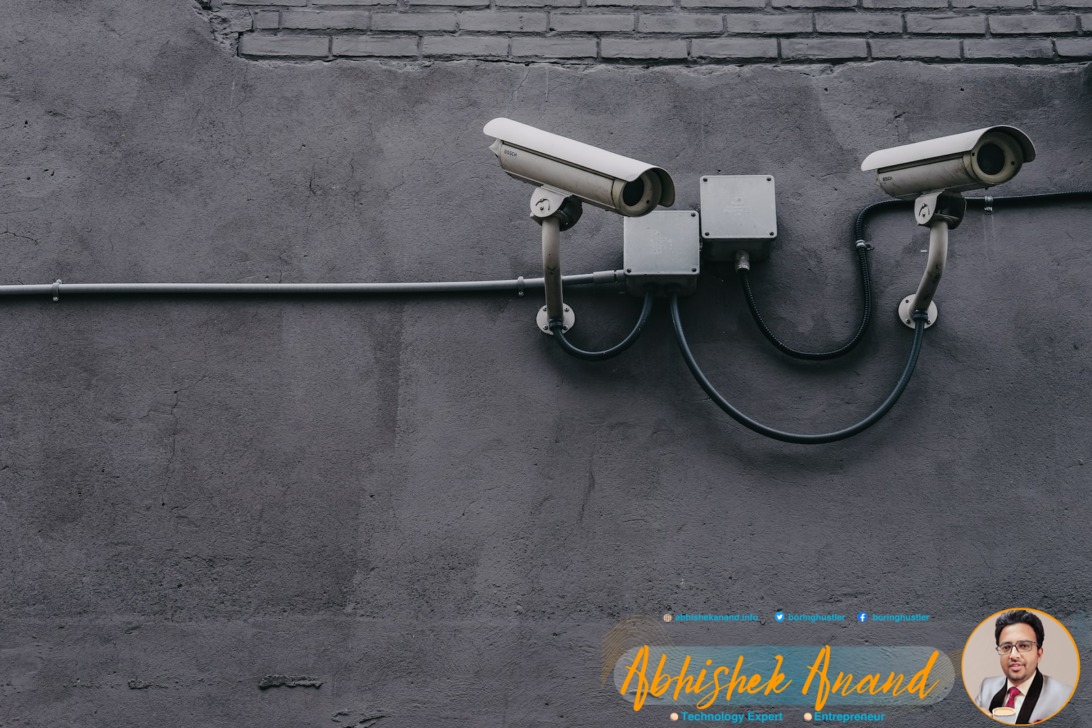Financial risk management is crucial for any business, but it is especially important for software-as-a-service (SaaS) companies. These businesses operate in a highly competitive and constantly evolving industry where staying ahead of the curve requires careful planning and vigilant risk management. In this article, we will discuss key financial risks that SaaS companies face and how they can identify and mitigate these risks.
One of the most significant financial risks for SaaS companies is customer churn. Losing customers not only reduces revenue but also affects the company’s reputation and market share. Another critical factor in managing financial risk is cash flow management. SaaS companies must maintain enough liquidity to cover expenses while investing in growth initiatives to remain competitive. Pricing strategy also plays a vital role in managing financial risk, as pricing models that are too low or too high can lead to loss of revenue or loss of customers respectively. Other factors such as data security, competitor analysis, insurance coverage, financial reporting, strategic planning, and continuous improvement are also critical components of effective financial risk management for SaaS companies. By identifying and mitigating these risks proactively, SaaS businesses can position themselves for long-term success in an ever-changing landscape.
Customer Churn
The phenomenon of customer churn, characterized by the loss of customers over time due to various reasons such as dissatisfaction with product or service, financial constraints, and market competition, poses a significant challenge for SaaS companies striving to maintain their revenue streams. In the highly competitive SaaS industry, reducing churn rates is crucial for business sustainability. Retention strategies such as offering personalized customer support and proactive communication can help build strong relationships with customers and increase loyalty.
To reduce churn rates effectively, it is essential for SaaS companies to identify the common reasons why customers leave. Conducting surveys and analyzing customer feedback can provide valuable insights into areas that need improvement. Companies can also leverage data analytics tools to monitor usage patterns and identify potential warning signs of customer dissatisfaction.
Implementing retention strategies requires a long-term commitment from SaaS companies. It involves ongoing efforts to improve product quality, enhance user experience, and provide exceptional customer support. By prioritizing customer satisfaction and implementing effective retention strategies, SaaS companies can mitigate the risks associated with high churn rates while maximizing their revenue potential through improved customer lifetime value.
Managing cash flow is another critical aspect of financial risk management for SaaS companies.

Cash Flow Management
This section will explore the critical aspects of cash flow management in SaaS companies. Firstly, understanding SaaS cash flow is crucial as it differs from traditional businesses due to recurring revenue models and high customer acquisition costs. Secondly, implementing strategies for managing cash flow is essential for ensuring sustainable growth and avoiding financial risks. Lastly, forecasting plays a pivotal role in effective cash flow management by providing insights into future revenue streams and expenses. Overall, this discussion aims to provide an analytical perspective on the importance of managing cash flow in SaaS companies.
Understanding SaaS Cash Flow
To gain a comprehensive understanding of SaaS cash flow, it is important to analyze the sources and uses of funds within the business. Subscription models are a key revenue source for SaaS companies, as customers typically pay on a recurring basis for access to the software. This predictable revenue stream can help businesses plan for future growth and investments.
Revenue recognition is also an important factor in SaaS cash flow management. Unlike traditional software sales, where revenue is recognized upfront at the time of sale, SaaS companies recognize revenue over time as customers use their software. This means that even if a customer pays upfront for an entire year’s worth of access, the company will only recognize that revenue over the course of that year. Understanding these nuances in subscription-based business models is crucial to effectively managing cash flow in SaaS companies.
Transitioning into strategies for managing cash flow, it’s clear that understanding the intricacies of SaaS cash flow is just one piece of the puzzle. By implementing effective billing and invoicing processes, tracking expenses closely, and analyzing financial statements regularly, businesses can ensure they have enough working capital to sustain operations and invest in growth opportunities without running into liquidity issues down the road.
Strategies for Managing Cash Flow
Effectively managing cash flow in a subscription-based business requires implementing efficient billing and invoicing processes, closely tracking expenses, and regularly analyzing financial statements to ensure sustainable operations and growth opportunities. Inventory management plays a critical role in maintaining a healthy cash flow by ensuring that the right amount of stock is available at any given time without tying up too much capital. SaaS companies should also allocate their capital wisely, investing in areas that can drive growth while avoiding unnecessary spending.
Capital allocation involves making strategic decisions about where to invest resources based on the company’s goals and priorities. This may include hiring new employees, developing new products or features, or expanding into new markets. Effective capital allocation can help SaaS companies achieve their long-term goals while avoiding overspending and reducing financial risk. By managing inventory levels and strategically allocating capital, SaaS companies can improve their cash flow position and set themselves up for long-term success. As such, forecasting becomes an important next step in this process to make informed decisions about future investments.
Importance of Forecasting
Forecasting is a crucial aspect of financial planning for subscription-based businesses, enabling them to make informed decisions about future investments and ensure sustainable growth. By conducting risk assessment and trend analysis, companies can identify potential financial risks and opportunities in the market. This helps them develop strategic plans that align with their long-term goals while mitigating any uncertainty. With accurate forecasting, businesses can anticipate changes in demand, supply chain disruptions, or macroeconomic trends that may impact their revenue streams.
Effective forecasting also enables companies to optimize their resources and allocate budgets accordingly. It provides insights into how much cash flow is required to sustain operations and invest in new initiatives. Additionally, forecasting allows businesses to evaluate different scenarios before making critical decisions such as entering new markets or launching new products/services. Ultimately, accurate forecasting helps subscription-based businesses achieve operational efficiency, minimize financial risks, and maximize profits.
As we move on to the next section about pricing strategy, it is important to note that effective pricing strategies are built on accurate forecasting methods. Therefore, by understanding the importance of forecasting in risk management for SaaS companies, we can lay a strong foundation for developing successful pricing strategies that will help drive business growth.

Pricing Strategy
The pricing strategy of a SaaS company plays a crucial role in its financial risk management, as it directly impacts revenue and profitability. One popular pricing approach is value-based pricing, which involves setting prices based on the perceived value that customers place on the product. This strategy allows companies to charge premium prices for products with high perceived value, such as those that solve complex problems or offer unique features. Another popular model is the freemium model, where basic services are offered for free but additional features are available at a cost.
While choosing the right pricing strategy is important in managing financial risks, SaaS companies must also be aware of potential risks associated with their chosen strategy. For example, if a company sets its prices too high relative to customer expectations or competitors’ offerings, it may struggle to attract customers and lose market share. On the other hand, setting prices too low can lead to lower margins and less revenue overall.
One key consideration when determining pricing strategies for SaaS companies is data security. As more businesses rely on cloud-based solutions and store sensitive information online, concerns about data breaches have become increasingly important. Companies must ensure they invest in robust security measures to protect sensitive data from cyber threats while balancing the need to keep prices reasonable for customers.
Transition:
In addition to considering data security risks when determining pricing strategies for SaaS companies, firms must also be mindful of other potential financial risks associated with cybersecurity threats.
Data Security
Ensuring data security is a critical concern for any organization that stores sensitive information online, as cyber threats continue to grow in complexity and frequency. For SaaS companies specifically, the risks associated with data breaches can be particularly damaging due to the nature of their business model. With customers entrusting their data to SaaS providers, any breach of security could result in loss of trust, reputational damage, and potential legal action.
To mitigate these risks, SaaS companies must adhere to strict data privacy regulations such as GDPR and CCPA. These regulations outline guidelines for how companies store, use and protect personal information. Failure to comply with these regulations can lead to hefty fines and legal consequences. In addition to regulatory compliance, companies should also implement comprehensive cybersecurity measures such as encryption software and regular vulnerability assessments.
Overall, maintaining strong data security is crucial for the success of any SaaS company. By taking proactive steps towards risk management through regulatory compliance and cybersecurity measures, organizations can safeguard against potential threats while building trust with their customers. As we move into the next section on competitor analysis, it’s important to keep in mind that a thorough understanding of industry trends and best practices is essential for effective risk management strategies.
Competitor Analysis
Analyzing the competitive landscape can be likened to a game of chess, where understanding your opponent’s strengths and weaknesses is crucial for developing effective strategies. In the case of SaaS companies, conducting market research and competitor analysis is essential to identify potential threats and opportunities in the market. Here are four key aspects to consider when analyzing competitors:
Market share: Understanding a competitor’s market share can provide insights into their size and reach within the industry. This information can help a SaaS company identify potential gaps in the market that they could fill or areas where they may need to improve to compete effectively.
Competitive advantage: Identifying a competitor’s unique selling point(s) can help a SaaS company differentiate itself from others in the industry. By understanding what sets their competitors apart, companies can develop strategies that highlight their own strengths while addressing any perceived weaknesses.
Pricing strategy: Examining how competitors price their products or services can give a SaaS company an idea of what customers are willing to pay for similar offerings. This information can inform pricing decisions, allowing companies to stay competitive without sacrificing profitability.
Marketing tactics: Analyzing how competitors promote themselves and engage with customers can provide insights into what works well (and what doesn’t) in terms of marketing strategy. By taking note of successful tactics, companies can adopt similar approaches while avoiding common pitfalls.
Understanding these aspects of competitors’ businesses is critical for SaaS companies looking to mitigate financial risks associated with competition in their marketspace.
Moving forward, regulatory compliance is another area that requires attention when it comes to managing financial risk for SaaS companies. Ensuring compliance with relevant regulations and laws not only minimizes legal risk but also helps build trust with customers who prioritize data privacy and security concerns when choosing software providers.
Regulatory Compliance
Regulatory compliance is an imperative aspect for SaaS companies to maintain the trust and loyalty of their customers, who prioritize data privacy and security concerns. The regulatory landscape for SaaS companies varies across different regions, with each country having its own set of regulations that must be adhered to. For instance, the General Data Protection Regulation (GDPR) in the European Union requires businesses to obtain explicit consent from individuals before collecting or processing their personal data. Failure to comply with such regulations can lead to hefty fines and damage a company’s reputation.
Compliance risk management strategies are essential for SaaS companies to mitigate regulatory compliance challenges effectively. One approach involves appointing a dedicated compliance officer responsible for staying up-to-date with all relevant regulations and ensuring that the company complies with them. Another strategy is investing in technology solutions that enhance data privacy and security measures, such as encryption tools or multi-factor authentication systems. Regular audits can also help identify areas where compliance needs improvement, allowing companies to take corrective actions promptly.
Regulatory compliance is crucial for SaaS companies operating in today’s increasingly regulated environment. Implementing effective compliance risk management strategies can help mitigate potential risks associated with non-compliance while enhancing customer trust and loyalty. However, it is also important for these companies to be mindful of economic volatility as they navigate through various regulatory requirements impacting their business operations.
Economic Volatility
Amidst the ever-changing economic landscape, SaaS companies must be prepared to navigate through periods of volatility in order to maintain their financial stability and sustain long-term growth. Economic volatility can manifest in various forms including currency fluctuations, market instability and geopolitical tensions. The impact of these factors on a company’s financial health can be significant, requiring effective risk management strategies.
One way for SaaS companies to mitigate the impact of economic volatility is by diversifying their revenue streams across multiple markets and currencies. This approach reduces the reliance on a single market or currency, thus minimizing exposure to fluctuations in any one region or economy. Another strategy is to closely monitor economic indicators such as inflation rates, interest rates and exchange rates. This allows companies to anticipate potential risks and adjust their operations accordingly.
As technology continues to advance rapidly, cybersecurity threats have become a major concern for businesses across all industries including SaaS companies. A breach in security not only compromises confidential information but also damages the reputation of the company leading to loss of customers and revenue. Therefore, it is imperative for SaaS companies to implement robust cyber defense mechanisms that can prevent unauthorized access and protect sensitive data from cyber attacks without compromising user experience or productivity.

Cybersecurity Threats
This subtopic delves into the pressing issue of cybersecurity threats faced by Software as a Service (SaaS) companies. Such threats can come in various forms, from phishing scams to ransomware attacks, and can significantly impact a company’s operations and reputation. To tackle this challenge, SaaS firms must adopt effective strategies for mitigating cybersecurity risks while also investing in employee education to promote awareness and prevent potential incidents.
Common Cyber Threats to SaaS Companies
Cyber threats pose a significant risk to SaaS companies, and understanding the common types of attacks is crucial for effective risk management. Some of the most common cyber threats to SaaS companies include phishing attacks, ransomware attacks, and DDoS attacks. Phishing attacks are fraudulent attempts to obtain sensitive information from users by masquerading as a trustworthy entity. Ransomware attacks involve hackers encrypting data on company servers and demanding payment in exchange for decryption keys. DDoS (Distributed Denial of Service) attacks involve overwhelming company servers with traffic from multiple sources, effectively rendering them unusable.
To mitigate these cyber threats, SaaS companies must implement robust cybersecurity measures and risk assessment strategies. Such measures may include regular software updates and patches, user education programs, firewalls, intrusion detection systems, anti-virus software, among others. Additionally, conducting regular vulnerability assessments can help identify weaknesses in the system before they are exploited by attackers. Effective cybersecurity risk assessment strategies should also consider both internal and external threats while prioritizing critical assets that require protection against potential breaches or unauthorized access attempts. Implementing such measures can significantly reduce the likelihood of successful cyber-attacks on SaaS companies’ systems and safeguard their critical data assets from malicious actors seeking unauthorized access or theft of proprietary information.
Strategies for Mitigating Cybersecurity Risks
Implementing cybersecurity measures such as regular software updates, user education programs, firewalls, intrusion detection systems, and vulnerability assessments can significantly reduce the likelihood of successful attacks on SaaS systems. Cybersecurity training is essential for all employees to ensure that they understand the importance of maintaining security protocols and how to recognize potential threats. Regular network monitoring is also crucial in detecting any suspicious activity or unauthorized access attempts.
In addition to these technical measures, companies should also prioritize employee education on cybersecurity risks and best practices. This includes educating employees on password hygiene, recognizing phishing scams, and not sharing sensitive information with unauthorized individuals. By ensuring that employees are aware of their role in protecting company data and implementing necessary security measures, companies can effectively mitigate cyber risks and protect against potential breaches.
Importance of Employee Education
Cybersecurity risks are a major concern for SaaS companies, as they handle sensitive data from their clients. While implementing security measures and investing in cybersecurity tools is essential, employee education also plays a crucial role in mitigating these risks. It is important to note that employees can be the weakest link in the cybersecurity chain, as they may inadvertently fall prey to phishing scams or use weak passwords. Therefore, educating them about potential cyber threats and how to avoid them is critical.
Employee training should involve regular risk assessments that identify areas of weakness within the organization’s infrastructure or processes. This way, employees can understand where vulnerabilities could exist and how to prevent them from being exploited by attackers. Additionally, training should cover best practices related to password management, email security, and secure file sharing protocols. By providing comprehensive cybersecurity training programs for all employees, SaaS companies can significantly reduce the likelihood of a successful cyber-attack occurring.
- Importance of ongoing employee education
Regular risk assessment as part of employee training
Best practices for password management,email security,and file sharing
Moving forward into contract management strategies’ section,it is imperative that SaaS companies establish clear guidelines on contract negotiation and execution with their clients.

Contract Management
Effective management of contracts is crucial for Saas companies to ensure compliance with legal requirements and mitigate financial risks associated with contract breaches and disputes. Contracts serve as the foundation of business relationships between Saas companies and their clients, outlining the agreed-upon terms and conditions. Therefore, it is essential that these contracts are carefully reviewed and negotiated before signing to ensure that they align with the company’s objectives while still meeting contractual obligations.
Renegotiation strategies play a vital role in contract management, especially when dealing with long-term contracts. As markets change and business needs evolve, renegotiating contracts allows for adjustments to be made to better reflect current circumstances. However, this process can be complicated, requiring a thorough understanding of legal regulations surrounding contract renegotiation. As such, Saas companies should work alongside their legal teams to create effective renegotiation strategies that protect both parties involved.
Contractual obligations must also be taken into consideration when managing contracts in Saas companies. These obligations include payment terms, service level agreements (SLAs), data privacy policies and other relevant clauses deemed necessary by both parties involved. Failure to uphold any one of these obligations could lead to breach charges or even litigation costs if not addressed promptly. By prioritizing contractual obligations during contract management processes, SaaS companies can ensure compliance with all necessary regulations while avoiding costly financial risks associated with breaches.
Effective contract management strategies are critical for Saas companies in mitigating financial risks associated with contractual breaches or disputes. With careful attention paid towards contractual obligations and proper negotiation techniques implemented when needed; businesses can significantly reduce their exposure to potential losses caused by non-compliance or violation of legal requirements related specifically intellectual property protection without writing ‘step’.
Intellectual Property Protection
Unsurprisingly, in a world where intellectual property theft is rampant and often goes unnoticed, it is critical for Saas companies to prioritize the protection of their intellectual property. This can be achieved through various means, such as licensing agreements and trademark registration. Licensing agreements allow Saas companies to license their software to other parties while still retaining ownership of their intellectual property. By doing so, they can ensure that their software is not used in a way that infringes upon their rights.
Trademark infringement is another significant risk for Saas companies when it comes to protecting their intellectual property. As more businesses move online, the risk of trademark infringement increases exponentially. To mitigate this risk, Saas companies should register trademarks for all of their products and services. Additionally, they need to monitor the use of their trademarks by others closely. Any unauthorized use must be quickly addressed through legal action.
Safeguarding intellectual property is crucial for any Saas company looking to succeed in today’s competitive market. Licensing agreements and trademark registration are just some of the ways that these businesses can protect themselves from risks associated with intellectual property theft and infringement. With proper protection measures in place, they can minimize losses resulting from stolen or misused proprietary information. The next section will delve into vendor management techniques that Saas companies should consider implementing to further reduce financial risks associated with third-party service providers without compromising on quality or performance standards.
Vendor Management
Vendor management is a crucial component of ensuring the quality and reliability of third-party service providers for Saas companies. Saas businesses rely heavily on vendors to provide services such as cloud infrastructure, data storage, and software development. As such, it is important for Saas companies to thoroughly evaluate potential vendors before entering into any agreements with them.
Risk assessment should be an integral part of vendor management. This involves identifying and evaluating the risks associated with using a particular vendor. Risks could include security breaches, data loss or corruption, system downtime, and financial instability. Due diligence should be carried out by the Saas company before engaging in business with any vendor to ensure that they can provide the necessary level of service without posing a significant risk to the company.
Effective vendor management can help Saas companies mitigate potential risks associated with third-party service providers. However, it is important to note that even with diligent risk assessment and due diligence processes in place, unforeseen circumstances may still occur. The next step in financial risk management for Saas companies is to consider insurance coverage as an additional layer of protection against potential losses arising from these risks.
Transition Sentence: With this in mind, let us now turn our attention towards insurance coverage for Saas companies as a means of further mitigating financial risks.
Insurance Coverage
Continuing our discussion on vendor management, it is important to note that SaaS companies need to prepare for a wide range of risks that may arise in the course of their operations. One way to mitigate these risks is by investing in insurance coverage. Insurance can provide financial protection against unexpected events such as data breaches, cyber attacks, and natural disasters.
Risk assessment is an essential step in determining the type of insurance coverage needed. It involves evaluating potential risks and identifying areas where the company may be vulnerable. This process should involve all relevant stakeholders within the organization, including legal and financial experts. Once potential risks have been identified, policies must be reviewed to ensure they cover all possible scenarios.
When reviewing policies, it is important to pay close attention to policy limits and exclusions. Policy limits refer to the maximum amount that an insurer will pay out for a particular event or claim. Exclusions are specific circumstances or types of losses that are not covered by the policy. Understanding these terms can help SaaS companies make informed decisions about which policies best suit their needs.
Obtaining appropriate insurance coverage can help SaaS companies manage various types of risks they face in their day-to-day operations. Through risk assessment and policy review, companies can determine which policies offer comprehensive protection against potential threats while also considering cost-effectiveness. With adequate insurance coverage in place, businesses can focus on growth and expansion with greater peace of mind towards future uncertainties. The next section will delve into financial reporting practices for SaaS companies as part of effective risk management strategies without compromising business continuity goals.
Financial Reporting
Effective financial reporting practices are crucial for SaaS companies to maintain transparency and accountability, which in turn builds trust with stakeholders. Financial reporting serves as a medium for communication between the management and external parties such as investors, creditors, and regulators. Financial reports provide insights into the company’s financial performance, position, and cash flows. However, SaaS companies face unique financial reporting challenges due to their business model’s recurring revenue nature.
One of the primary challenges that SaaS companies face is accounting standards compliance. The International Financial Reporting Standards (IFRS) or Generally Accepted Accounting Principles (GAAP) govern the preparation of financial statements worldwide. Compliance with these standards ensures consistency in financial reporting across industries and countries. However, SaaS companies may have difficulty identifying how to account for their various revenue streams properly. For example, they must distinguish between subscription revenues recognized over time versus upfront fees or implementation fees recognized at once.
Effective financial reporting practices are critical for SaaS companies to manage risks better and make informed decisions. To do so successfully requires overcoming unique challenges related to accounting standards compliance specific to the industry’s business model. In the next section about strategic planning, we will discuss how SaaS companies can use this information effectively by incorporating it into their strategic decision-making processes.
Strategic Planning
Strategic planning is a process that involves the identification and evaluation of various options to determine the best course of action for achieving long-term goals and objectives. For SaaS companies, long term sustainability is essential, and strategic planning plays a crucial role in ensuring that they achieve their growth objectives while minimizing risks. To achieve sustainable growth, SaaS companies must focus on identifying potential growth opportunities by assessing market trends, customer needs, and competitive landscape.
One critical aspect of strategic planning in SaaS companies is setting realistic goals with measurable outcomes. This process involves understanding the company’s current position and defining where it wants to be in the future. It should also involve identifying strategies for achieving those goals by leveraging internal strengths while managing potential threats or weaknesses. Long-term sustainability requires continuous improvement through ongoing evaluation of progress towards achieving established goals.
SaaS companies can also use strategic planning to identify potential risks and develop mitigation plans accordingly. By analyzing financial data, sales trends, customer feedback, and other relevant information sources, companies can anticipate potential challenges that may impact their ability to achieve their long-term goals. Companies can then develop risk management strategies such as diversifying product lines or partnering with industry leaders to mitigate these risks effectively.
Strategic planning is essential for SaaS companies seeking long-term sustainability and growth opportunities. Setting realistic goals with measurable outcomes allows for continuous improvement while identifying potential risks allows developing effective mitigation strategies. The next section will explore how continuous improvement helps SaaS companies maintain an edge over competitors continuously without writing ‘step.’ …by identifying and addressing areas of improvement in their products, services, and operations. This enables them to stay ahead of the curve, respond quickly to market changes, and deliver greater value to their customers. Additionally, continuous improvement helps SaaS companies foster a culture of innovation and learning, which can lead to breakthrough ideas and new revenue streams. Ultimately, by prioritizing continuous improvement, SaaS companies can build a sustainable competitive advantage that sets them apart from their rivals.
Continuous Improvement
Continuous improvement is a key factor in maintaining competitiveness, with studies showing that companies that prioritize it achieve 4.2 times the market share gain and 2.6 times the revenue growth of those that do not. In the context of Saas companies, continuous improvement involves implementing Kaizen and Agile methodologies to identify and mitigate risks in real-time.
Kaizen implementation involves making incremental changes to processes over time, with the aim of improving efficiency and reducing waste. This approach encourages employees at all levels to identify areas for improvement, leading to a culture of continuous learning and development. In financial risk management for Saas companies, Kaizen can be used to regularly review internal controls, update risk assessment frameworks, and streamline compliance procedures.
Agile methodology is another framework commonly used in Saas companies for continuous improvement. It emphasizes collaboration between cross-functional teams through frequent feedback loops and iterative development cycles. By constantly gathering data on user behavior and market trends, Saas companies can quickly adapt their products or services to changing customer needs while also identifying potential financial risks before they escalate into larger issues. Incorporating these methodologies into financial risk management strategies can help Saas companies stay ahead of the curve in an ever-changing industry landscape.
Conclusion
In conclusion, financial risk management is a critical aspect for the success of SaaS companies. By identifying and mitigating potential risks such as customer churn, cash flow management, pricing strategy, data security, competitor analysis, insurance coverage, financial reporting, strategic planning and continuous improvement measures can be put in place to safeguard the company’s financial stability.
As Warren Buffet famously said: “Risk comes from not knowing what you’re doing.”It is essential for SaaS companies to have a thorough understanding of their market and industry trends to effectively manage their finances. The implementation of proper risk management strategies enables these companies to make informed decisions that protect their bottom line while also ensuring future growth opportunities.
In today’s fast-paced business environment where technological advancements are constantly emerging, it is imperative for SaaS companies to stay ahead of the competition by being vigilant about financial risks. By proactively identifying and addressing these risks through robust risk management practices, SaaS companies can secure a stable and prosperous future for themselves in an ever-changing marketplace.

